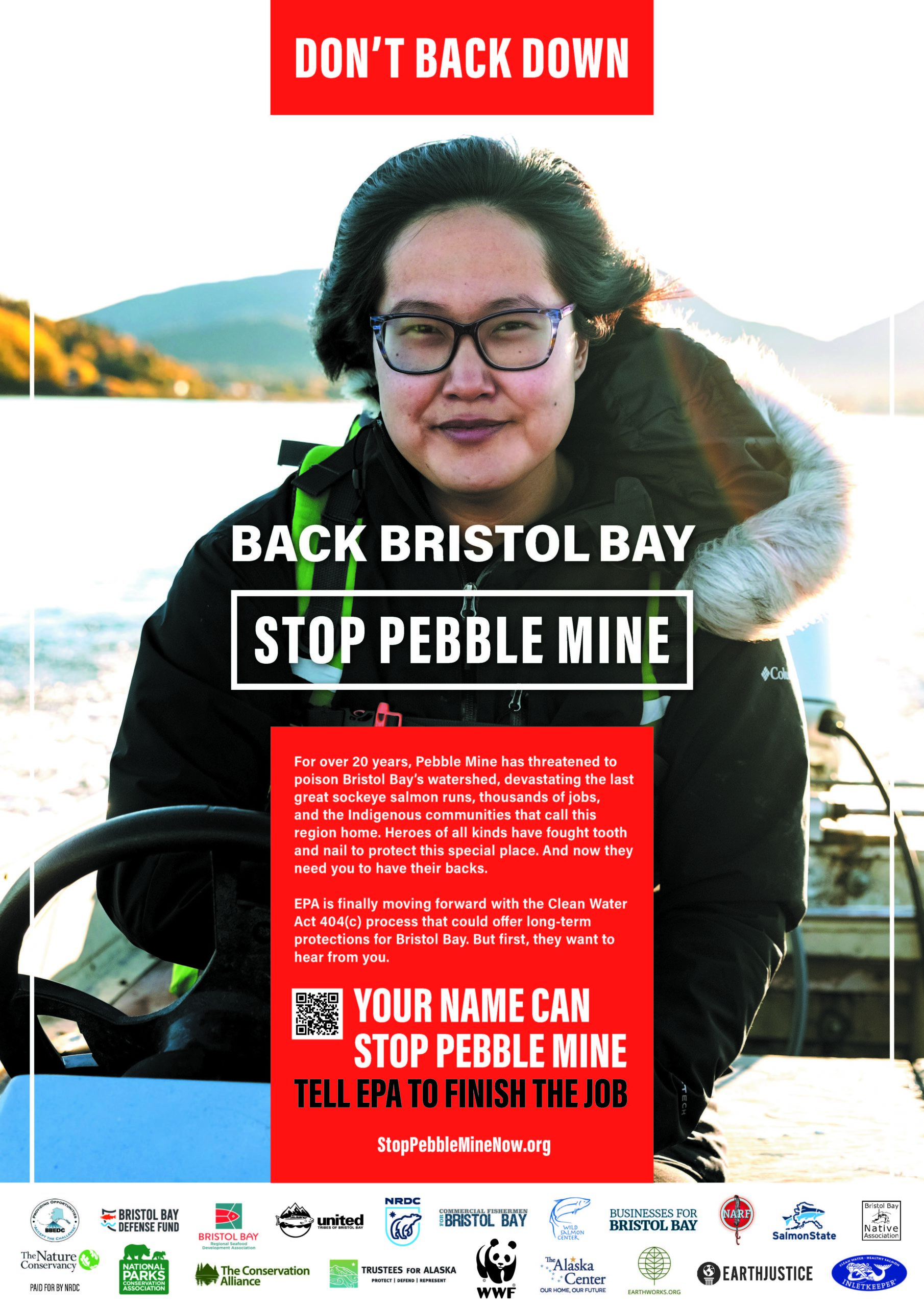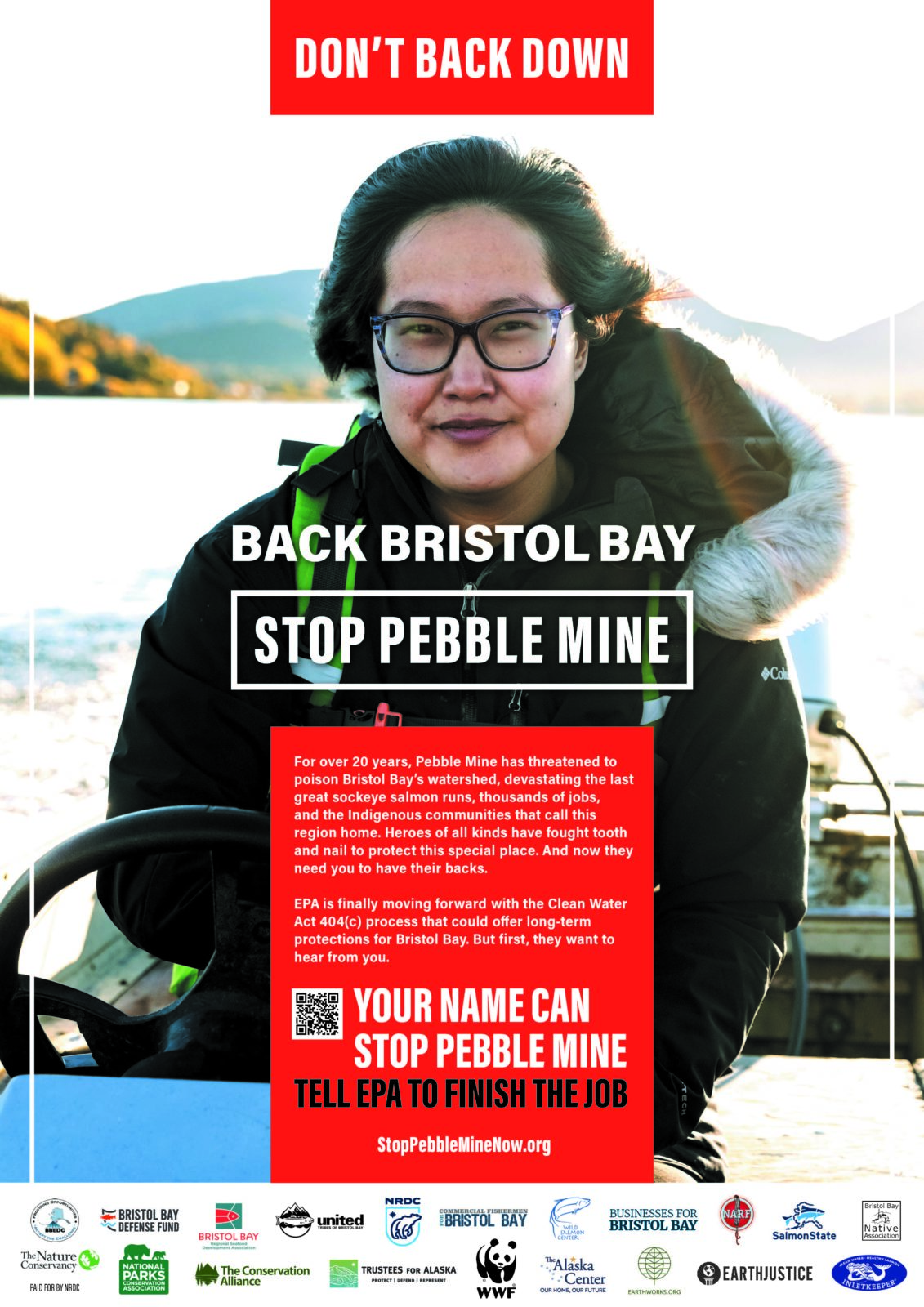
What will it take to permanently protect Bristol Bay? First, speak out.
In late May, the U.S. Environmental Protection Agency made a move toward protecting Bristol Bay by releasing a revised proposed determination under the Clean Water Act Section 404(c) that would prohibit and restrict the use of some Bristol Bay headwaters as disposal sites for mining waste.
EPA’s new proposal evaluates Pebble’s 2020 mine plan—which the U.S. Army Corps of Engineers denied a permit—and seeks to prohibit the type of mine proposed by Pebble or any future mines with similar impacts. It would cover a broader geographic area than the 2014 proposed determination, but allow more mining than EPA proposed banning in 2014.

Let us explain. If finalized, this determination would block the proposed Pebble mine and restrict mining of the Pebble deposit. Taking action to preclude the filling of wetlands and streams has only been done 13 times since 1980. When EPA took action in those cases, it focused on a particular project.
Similarly, this decision if finalized would focus on precluding a mine as proposed by Pebble or any future mine that would result in the loss of wetlands and streams at a similar level. The action is limited in that regard; other areas in the Bristol Bay watershed remain open to mining.
Of course, that doesn’t mean mining companies have a blank check in those other areas or that any mine smaller than what Pebble proposed would pass muster under the Clean Water Act—the science clearly shows that a much smaller mine than the 2020 mine plan would also unacceptably impact the aquatic ecosystem, and EPA could—if necessary—block such mine proposals in the future.
The EPA is listening right now
The comment period for chiming in about the EPA’s revised proposed determination runs through July 5. It’s important for Alaskans to speak out. You can comment directly on the EPA site or sign on to a letter urging the EPA to finalize protections this year.
Trustees’ comments will focus on the science that supports protecting this important watershed. Over the last several years a body of science has demonstrated that mining in this area would have devastating consequences for salmon, the ecosystem as a whole, and all those who depend on this healthy and bountiful watershed.
The 2014 Bristol Bay Watershed Assessment came to this conclusion and was peer-reviewed twice. Since then, more studies and reports have confirmed and further established the many deleterious impacts associated with mining in the headwaters of the North and South Fork Koktuli and Upper Talarik Creek watersheds. Simply put, the science is strong and irrefutable, and it supports the momentous decision to protect this place.
Let’s get it done
Alaska witnessed the 2014 proposed determination fizzle and later get illegally withdrawn by the Trump administration. It’s time to get protections in place once and for all. Bristol Bay communities deserve to live their lives without fighting a destructive mine year after year.
Alaskans can speak up now for protections so folks in Bristol Bay can get back to centering their lives on salmon and all the traditions, livelihoods and lives it sustains.


